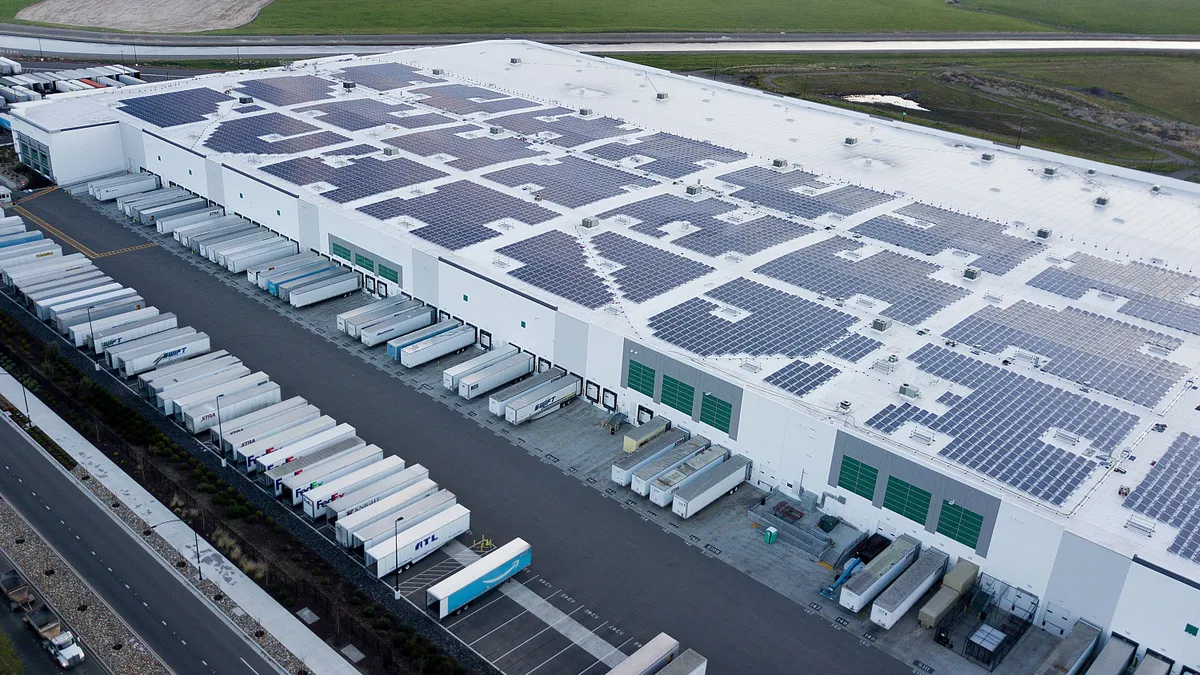Dive Brief:
- E-commerce facilities represented 37% of all new leases for Prologis in Q3, the company's Chief Financial Officer Thomas Olinger told analysts on an earnings call Tuesday. The figure is "well above" the historical average of 21%, Olinger said.
- "A wide range of omnichannel and pure online retailers are growing, and while Amazon is very active particularly with build-a-suit, they represented just 13% of our new leasing," he said.
- Prologis has seen an uptick in inventory levels as retailers claw back from a nationally low inventory-to-sales rate, Olinger said. This is a signal that restocking is taking place across the country.
Dive Insight:
Space utilization at facilities owned by Prologis was at 84%, a sign the market is normalizing as the company's long-term average for utilization is 85%, according to slides shown during the earnings presentation.
With utilization increasing and new leases rolling, Prologis executives were fairly open about the fact that renting warehouses could get more expensive down the road. And prices are already trending upward, according to Olinger.
"Based on our third quarter valuation and current market activity, pricing for our properties is now pushing well beyond pre-COVID levels," he said. "We could have push rents harder had we known how this was going to play out," Olinger said.
But these increases could still be coming down the line. Olinger said he is "pretty optimistic about our ability to continue to grow rents." Globally, Prologis' rents are trending toward a more than 2% growth for the year and about 2.5% in the U.S.
Prologis figures show a 100% occupancy rate in Central Valley, California, and 99% in Lehigh Valley, Pennsylvania. Houston is among the lower levels with a 90% occupancy rate.
"Houston for sure is going to face headwinds," Prologis Chief Investment Officer Eugene Reilly said on the call. "There's a ton of supply in that market."
With rents rising and new leases being signed, it could seem like companies are doing well across the board and are looking for warehousing space. But this is not the case. Prologis' customer retention rate was nearly 73%, which is the lowest its been since 2018, one analyst pointed out.
Olinger said this metric highlighted the K-shaped nature of this recovery: Some companies are flourishing while others are floundering.
"There is the world of haves and the world of have-nots and relatively little in the middle, compared to most other periods," he said.
The companies on the upper part of the K are expanding their business and doing well. The companies on the bottom of the K are struggling, going out of business and potentially leaving their warehouse space behind. As long as this is the case, retention levels will likely fall, especially as the company pushes rents higher, Olinger said.
But one of the reasons the market has shown improvement is that a lot of the turnover in the marketplace for small businesses that are more vulnerable to an economic downturn has already happened, he said.
"The market getting better is because a lot of that churn took place in the early days and as the days go by the survivors are surviving and holding on," he said.














